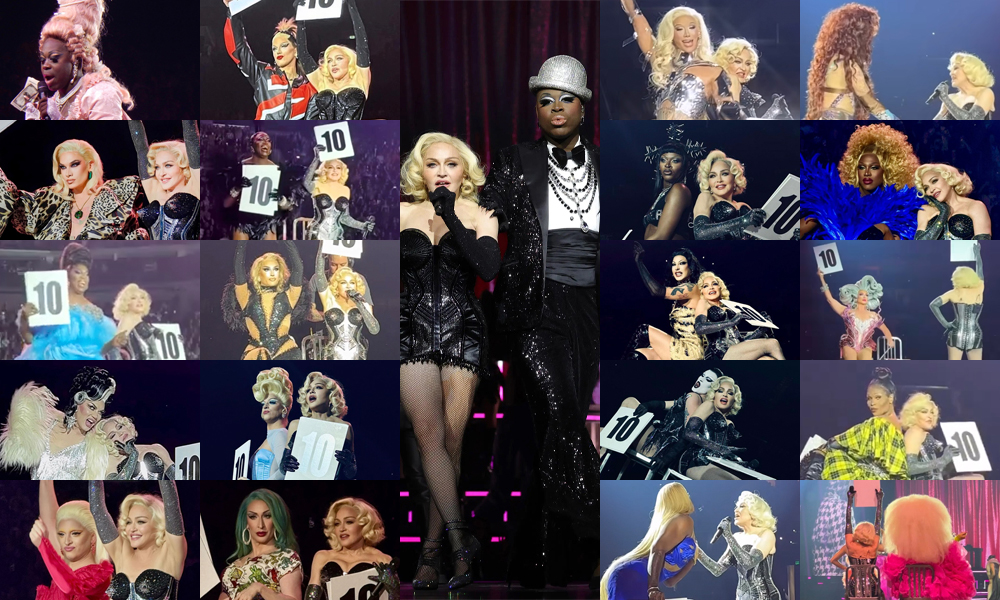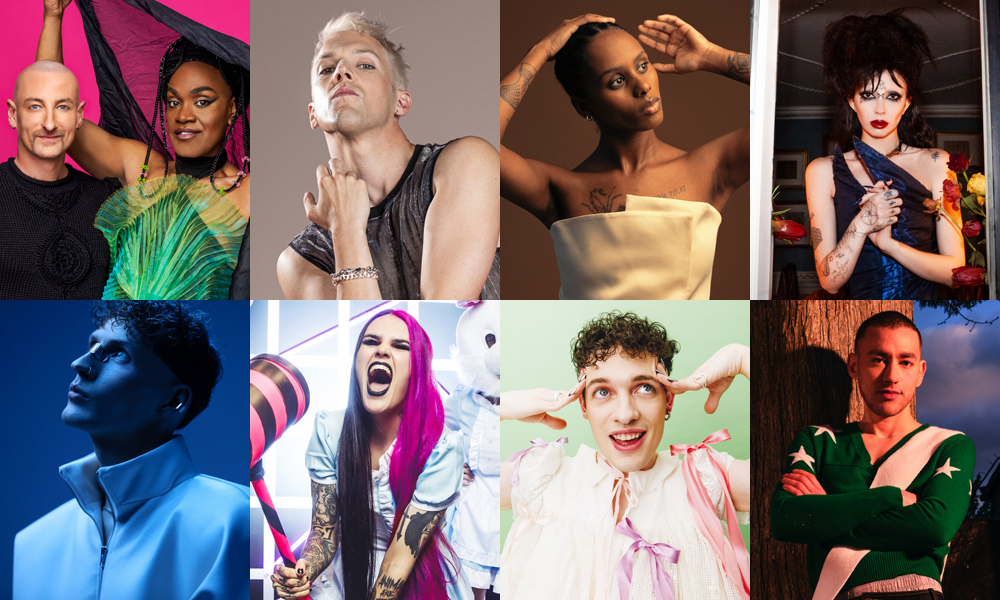In the 20 years since the TV show premiered, it has broadened horizons and changed the way queer women were represented in the media…
By Bianca Guzzo
Before the premiere of The L Word in 2004, the only representation queer women got in popular media was one-dimensional lesbian characters shown on sitcoms and dramas for, at most, one to two episodes. The L Word literally flipped the script on what relatable media could look like for queer women. From messy relationships, to breakups, the messy affairs, and of course the makeups, the intertwined relationships of these women from Los Angeles captivated its loyal fanbase, and the show continues to influence the way lesbian and bisexual women are characterized on television. For the first time, queer women were seeing accurate portrayals of their lives on mainstream television. They weren’t being used as a cheap gimmick to boost ratings, or as the punchline to a joke. They felt seen, and they saw their own close-knit communities reflected back at them on screen.
What was it about The L Word that made it so special and appealing to queer audiences? And how have we continued to see the ripple effects of what it started back in 2004?
In the beginning…
According to Liveabout.com, the show Heartbeat was the first to feature a regular lesbian character, in 1988. In 1991, the first sapphic kiss was shown in an episode of L.A. Law between a bisexual lawyer and one of her colleagues. Towards the end of the ’90s, Ellen DeGeneres made waves with the infamous “Puppy Episode” of her eponymous sitcom, when she bravely came out both in and out of character. And during an episode in the second season of Friends,we saw Ross’s first wife, Carol, marry her partner, Susan, in the first televised wedding between two women.
But these examples of representation for lesbian and bisexual women were, let’s face it, crumbs. Yes, it was more than we had previously seen on prime time dramas and sitcoms, but a lot of the time kisses between female characters were produced, promoted and teased to the audience only as a tool to get viewership up. The lesbian stereotype we had so often been fed on television was usually a side character with a one-episode story arc. This character was usually a butch lesbian, who was purposefully portrayed with little to no sex appeal. In some cases the storylines felt one-dimensional, or had obviously been thought up by a male-led team and produced with and for the male gaze. This wasn’t media being created with queer audiences in mind, and the result was disingenuous representation that saw romantic moments shared between women as a stunt to attract more viewers.
That all started to change when The L Word premiered on Showtime on January 18, 2004. Not only did it crush the stereotyped depictions of lesbians, but it also made room to portray more of a spectrum of sapphic identities and storylines all in the same series. During its original six-season run, viewers would tune in to watch an hour of pure sapphic drama: breakups, makeups, women in established long-term relationships trying to start a family, complicated love triangles and, of course, how the relationships between these women would intertwine with each other throughout the series, (we get a visual sense of that intertwining at the end of the show’s second episode through “The Chart” – more on this later). It gave us both lesbian and bisexual women, and none of it was played off as a joke. For the first time, queer women were seeing themselves on screen in a way that didn’t feel icky.
A winning formula
What was it that made The L Word so iconic when it came to the representation it delivered in the prime-time space? Sure, the actors who played the complicated protagonists and love-to-hate anti-heroes of the series had a lot to do with why viewers kept tuning in. Some of the show’s actors, who were also queer (but not all out at the time), brought the stories and characters to life, and hooked us in week after week and season after season. And there was also a lot of magic happening behind the scenes, too.
The queer women working behind the camera – like co-creator and producer Ilene Chaiken, and the talented group of writers working on the show – really laid the groundwork for queer female stories to be told more freely on television, and they did so by sometimes sprinkling in stories from their own lives into the plot. Having not only women, but queer women, in the writers’ room to create the show really helped it feel well-rounded, sincere, and not just playing up the sexuality of the characters for the pleasure of male audiences.
Many fans have speculated that Chaiken incorporated elements of her own lived experience into the storylines of the show for years. In a 2018 interview with People Magazine, Chaiken revealed that the Jenny and Marina storyline in the first season was inspired by her first lesbian relationship, which ended in heartbreak once she found out her girlfriend already had a long-term partner.
Another way writers were able to infuse their own experiences into the series was through “The Chart.” Alice Pieszecki (played by Leisha Hailey) keeps track of the romantic relationships of the group, as well as the queer community in Los Angeles, with her version of “The Chart,” which chronicles the relationships, hook-ups and affairs the characters share with each other over the series. The idea for the infamous chart was created when the writers of the show were discussing the mutual romantic connections they shared. They decided to incorporate it into the series, which turned into the Alice character developing it into a social networking site in the series. The fictional chart and website inspired a project called “OurChart.com” to be developed in the real world, where fans of the show could make profiles and create their own charts within their social groups.
Did The L Word always get it right? Well, the answer is complicated. By a 2024 standard, some characters and storyline choices haven’t exactly aged well. Such is the case for any “ground-breaking” show that aired 20 years ago. Sex and the City, for example, is often lauded as being ahead of its time for the way it portrayed women talking and partaking in casual sex. But a 2000 episode of the series saw Carrie Bradshaw dating a bisexual man, and her general disgust in her partner and disbelief that bisexuality even exists – and she’s a sex columnist – has not held up over time. The same can be said about certain storylines on The L Word. Most fans of the show frequently bring up how disappointed they are over the treatment of Max (played by Daniel Sea), a transmasc character, in the third season. Throughout the series, some characters also voiced disgust, through jokes, towards butch-presenting side characters. In fact, the mistreatment of butch characters and lack of butch representation on the show is something that both new and old viewers say was a major step backwards when it came to the progressive writing of The L Word.
The L Word lives on
Despite the fact that the show’s last episode aired 15 years ago, in 2009, the show’s fanbase is still very active in online spaces. Fans post queries, rants and revelations to the show’s subreddit every day, and there are currently 28,000 posts under #thelword on TikTok, which are mostly thirst edits of Shane McCutcheon (played by Katherine Moenning). Fans have watched and re-watched the series, and frequently discuss in the comment sections what the show got right, and which storylines have aged like milk.
One popular opinion in the subreddit is the dislike for the Jenny character (played by Mia Kirshner) throughout the series, but mainly with how she centred herself in her partner’s transition during the third season. It should be mentioned that a lot of fans agree that the Jenny character does have a redemption arc and is regarded by a lot of viewers as one of the most exciting characters in the show to watch.
A lot of the fans also agree that the trans character of Max, and Max’s storyline, make the show hard to rewatch. In a 2023 episode of the reboot The L Word: Generation Q, Shane catches up with Max at a party and offers them an apology for how they were treated the last time they saw each other. Many fans of the show saw this as the show also apologizing to its audience for the way they chose to portray a trans character in the original series. Other viewers argue that having a trans character on a show in the mid 2000s provided visibility that inevitably helped pave the way for better representation of trans identities in media.
The L Word came out at a time when queer representation was highly needed, and it really did usher in a new type of media that told queer stories without making fun of the characters. Its entire run predated the legalization of same-sex marriage in the United States. The last episode of the original series aired in 2009; the first episode of Glee premiered that same year, and shows like Modern Family soon followed. A 2012 poll conducted by The Hollywood Reporterfound that the visibility of queer characters with genuine storylines in television shows like Glee and Modern Familyactually drove people to vote in favour of legalizing gay marriage that same year.
Looking back 20 years, The L Word is certainly a product of its time, but we can’t ignore what it got right. Without it, we wouldn’t have gotten to enjoy shows where the main characters are queer women, like Orange is the New Black or Killing Eve.
The drop in the water of queer television that The L Word originally created is still making waves today. In 2023, some of the core cast members – Jennifer Beals, Leisha Hailey and Katherine Moenning – and co-creator Ilene Chaiken were invited to the US Capitol to stand beside the first openly LGBT White House press secretary, Karine Jean-Pierre, and give a briefing on Lesbian Visibility Week.
We need stories about queer women now more than ever in the media. Shows depicting lesbian and bisexual stories are cancelled a lot quicker and are less celebrated than their male counterparts. The Wilds and A League of Their Own both ended prematurely thanks to being cancelled by Amazon, even though both shows had vocal fanbases and the demand for renewal was there. Even The L Word: Generation Q couldn’t escape a hasty cancellation. The sequel to the original series, which had been well received, was given the axe by Showtime after just three seasons. These stories still need to be told. Queer women deserve to see themselves and their friends represented accurately in the media they consume.
The L Word started an unstoppable craving for sincere stories and characters for queer women that isn’t slowing down any time soon. We don’t have to be a one-dimensional side character or the punchline to a cheap joke anymore. Sapphic characters in modern series and movies display a wider range of the queer spectrum and experience than ever before, which will only get better with more representation, and we have The L Word to thank for that.
BIANCA GUZZO is a writer based out of the GTA. She spends her free time watching Trixie Mattel makeup tutorials, though she has yet to nail the look.







POST A COMMENT